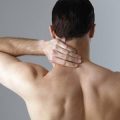The question, “Can Degenerative Disc Disease Be Reversed” is a question that ponders in the mind of any health-conscious person who has heard about degenerative disc disease. DDD as it is commonly called is a condition that is common with aging and with certain measures can be reversed and even be prevented from occurring. Degeneration disc disease is also referred to as spondylosis and is a condition that affects any area of the spine including lumbar, cervix, or thorax.
How Aging Affects Spine Discs
Disc degeneration normally occurs with aging and with aging other changes occur such as;
- Disc drying and shrinking-the disks lose water as we age and results in loss of flexibility thus putting more stress on the annulus.
- Shrinking of the disc space- as we lose water in the discs the vertebrae tends to collapse or shrinking making us shorter.
- Growth of bone spurs-absence of discs cushioning the vertebrae result in vertebrae rubbing against each other and this leads to abnormal bone growths.
- Narrowing of the spinal canal as a result of enlargement of ligaments and facet joints-since the body load is no longer supported properly by the spine, the ligaments and facet joints enlarge in order to compensate and spread this load. This ultimately leads to the narrowing of the spinal canal which inflicts pressure on the nerves and spinal cord resulting in pain.
Symptoms of DDD
Degeneration disc disease symptoms vary widely with respect to the individual. Some may experience excruciating pain whereas in some people no pain is felt. Experts have established that most people with DDD experience pain in their 20s or 30s and those in their 60s rarely have back pain caused by this condition.
The first symptom of degenerated disc disease is pain in the lower back and you may feel it on both legs and the sciatica or buttocks. The legs may also be numb or tingle.
Secondly, chronic pain that sets in from time to time-You may experience some periodic intense muscle pain that last for a few days and even go up to several months.
Finally, you feel some pain when you sit. This is due to the weight overload on the discs when you are seated. The situation even worsens when you bend or twist. When you lie down you feel some relief. You also feel so much better when you run or walk instead of sitting.
Degeneration disc disorder is mostly caused by injury, aging, and some other conditions such arthritis and osteoporosis. It is mostly common in young adults and middle age groups. Various studies have linked smoking with this condition and there has also been some studies linking DDD with specific occupations. It is a condition that tends to recur among members of the same family.
Having known all these how then can degenerative disc disease be reversed? Well it is possible. With exercise and ideal back management practices you can be able to curb DDD and live a healthy and rewarding life.
Once you discover that you have this problem, do not panic. You will be first subjected to non-surgical treatment and if it does not respond the surgery becomes an option.
Non-Surgical Treatments for Spondylosis
Some of the most effective non-surgical treatments for degeneration disc disease include chiropractic, exercise, rest, pain management, medication, hydrotherapy, and physical therapy.
- Physical therapy-this is very essential in curbing degenerative disc pain. It mainly entails being trained on proper lifting and walking techniques. With the help of a physical therapist you can be able to restore your health within no time. You are also trained on ways of increasing the flexibility of the spine. In acute stages of DDD additional techniques are used. These may include ice application, pain medication, change of activity, use of muscle relaxants, and rest.
- Self care-this is very important for long term positive results. Applying the correct posture and aligning the spine well can help restore your health. Adopt proper sitting, sleeping, and standing habits. Furthermore, knowing how to bend and lift properly will help prevent and ease the pain.
- Stress management-to restore your health you need to avoid stress since it places a heavy toll on the body. Try some relaxation exercises such as visualization, taking deep breathes and others. These will help you reclaim control of your body.
- Holistic therapy-some holistic therapies such as nutritional supplements, acupuncture, biofeedback, and acupressure also help. They will help you in learning how to manage pain and enhance overall body health.
- Medications-the use of some medications such as steroids, non-steroids, and analgesics will help reduce pain and inflammation.
If none of these treatments is effective then surgery becomes a better option.






 I love to write medical education books. My books are written for everyone in an easy to read and understandable style.
I love to write medical education books. My books are written for everyone in an easy to read and understandable style.